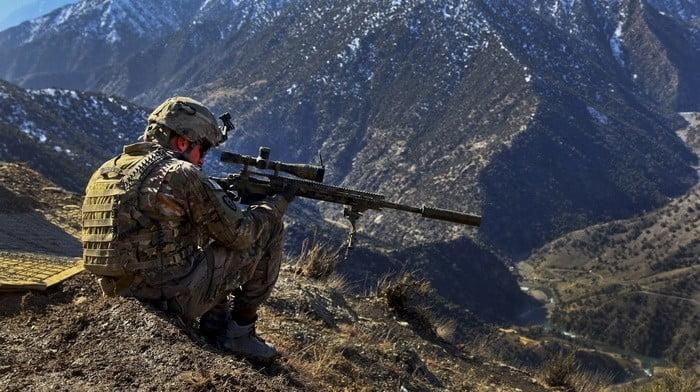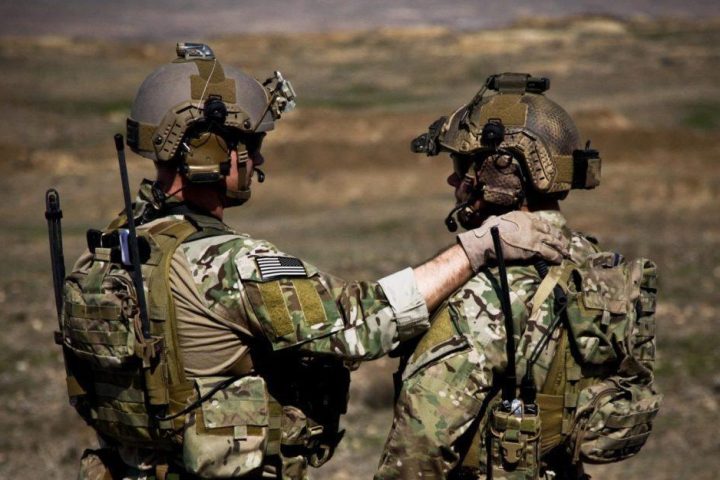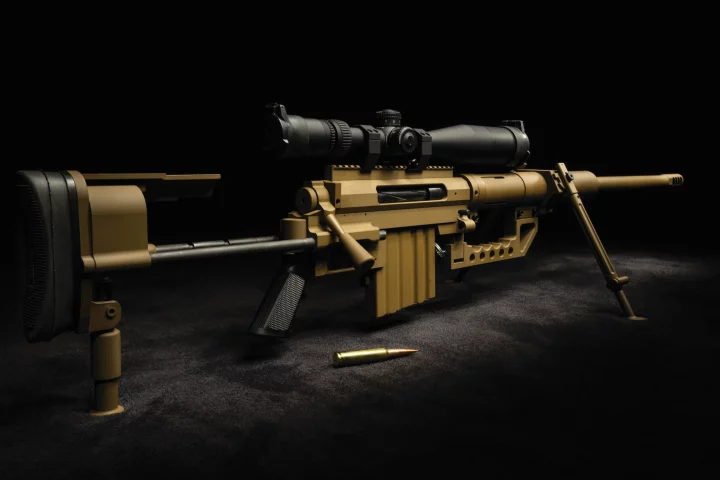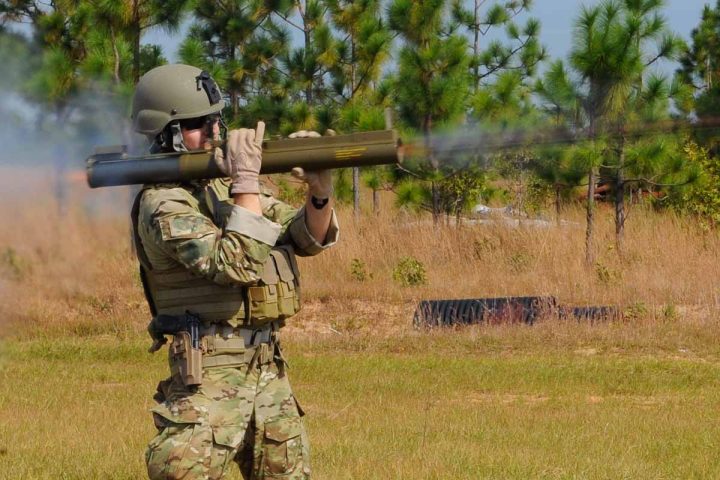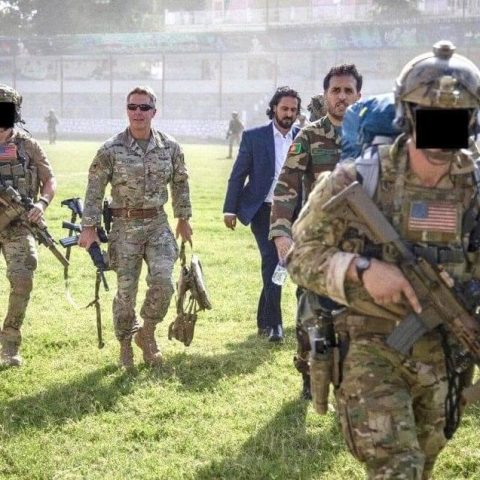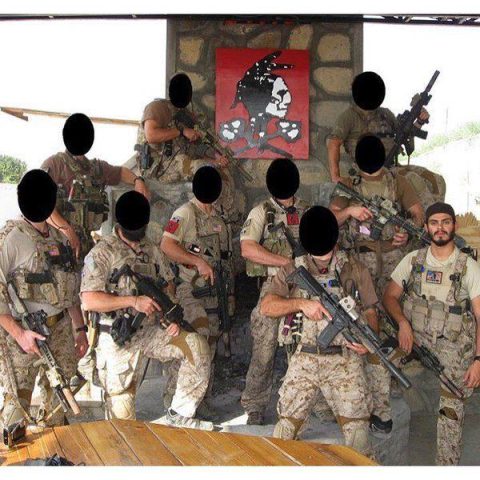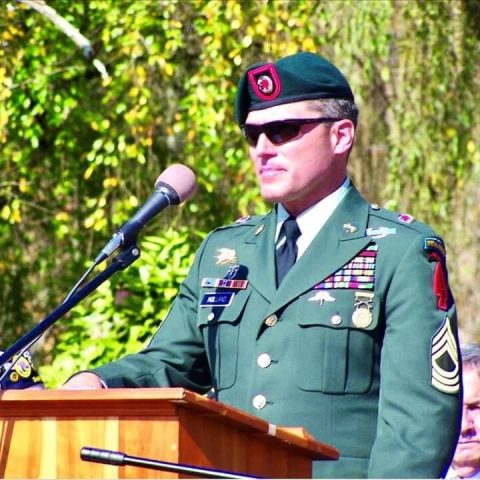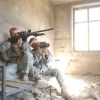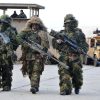The selection of .300 Winchester Magnum extended the U.S. Army sniper’s range to 1200 meters—four hundred beyond the M24. As a result, the M2010 ESR received an improved, longer-range optic, the Leupold Mark 4 M5A2 with variable 6.5- to twenty-power magnification. The Leupold scope can be fitted with the Knight’s Armament AN/PVS-29 or AN/PVS-30 night-vision scopes for night firing. Finally, a suppressor designed by Advanced Armament Company eliminates flash and significantly reduces the noise signature of the rifle, handy features when a sniper is trying to conceal its position.
M-24 Sniper Weapon system
The U.S. Army’s long-serving sniper rifle has its roots in one of the most iconic American hunting rifles ever produced. The M-24 Sniper Weapon System, the standard issue among the Army’s sniper teams, is based on the fifty-six-year-old Remington 700 hunting rifle. When the U.S. Army decided to field a new, heavier-caliber sniper weapon, it again turned to the Remington 700 to produce the advanced M2010 rifle.
The Remington 700
The Remington 700 is one of the most popular American firearms of the twentieth century. Introduced in 1956 as an affordable, relatively lightweight bolt action hunting rifle, the 700 lines sold more than four million copies. The rifle is available in more than two dozen calibers, from .17 Remington to .458 Winchester Magnum, and can bag game from squirrels to moose.
The transition from M21 to M24 sniper rifle
In the mid-1980s, the U.S. Army decided it needed to replace the service’s existing sniper rifle, the M21 sniping rifle, with a new weapon. The M21, based on the M14 battle rifle, dated to the Vietnam War. Although semiautomatic, the M21 was less accurate and required more maintenance than most sniper rifles. The Army opened up a competition for a new rifle in November 1986 and picked a winner, Remington Arms, in July 1987.

Remington’s contestant, the M-24 Sniper Weapon System, was a bolt-action rifle based on the Remington 700 hunting rifle. It was similar to the Marine Corps’ M40 sniper weapon, also based on the Remington hunting rifle. The rifle barrel was free-floated, only touching the rest of the rifle where it attaches to the Remington action to prevent pressure from changing the point of impact. Remington also provided the weapon with a Harris bipod to support shooting from the prone position and cover.
Caliber
The M24 was chambered in 7.62×51-millimeter (.308 Winchester), meant to use M118 7.62×51 Special Ball ammo and the M118’s 173-grain bullet. The rifle used a heavy, twenty-four-inch-long barrel that increased velocity (and thus distance) and could be fired repeatedly without heat affecting accuracy. Barrel twist, which imparts spin on the bullet and increases accuracy, was one complete turn for every eleven inches.
Optics
The optic is one of the most important features of a sniper rifle. The M24 was originally equipped with a Leupold M3A Ultra fixed power scope with ten-power magnification and featured Redfield (and later OK Weber) fixed iron sights for use in emergencies. A fixed power scope, the M3A had fewer moving parts to break under field conditions. This was later replaced with a ten-power Leupold Mk. IV LR/T M1 scope.

Unlike the M21, a semiautomatic rifle fed by a large twenty-round box magazine, the M24 was a bolt-action rifle fed by an internal five-round magazine. The shift away from semiautomatic to bolt action may have been controversial at the time, but it was the right decision. Bolt-action weapons, manually cycled by the user, are more reliable and far less prone to jamming. They were also more accurate than semiautomatic rifles at the time, although this is no longer necessarily true.
The M24/M118 Special Ball combination was reasonably accurate, capable of shooting a minute angle (one inch of deviation at one hundred yards). As one retired U.S. Army sniper put it, the M118 Special Ball round was capable of accuracy from .2 (1.5-inch groups at five hundred yards) to one minute of angle. At worst, the M118 Special Ball round was capable of a ten-inch spread at a thousand yards—acceptable considering a human target’s chest is generally assumed to be twenty-three inches across.
Operative usage
The M24 performed well in Afghanistan and Iraq, with sniper teams capable of long-distance, long-term observation of target areas. On September 27, 2005, U.S. Army sniper team leader SSgt. Jim Gilliland shot an insurgent with his M24 Sniper Weapon System at a range of 1,367 yards, or seven-tenths of a mile. At that distance, gravity caused the 7.62-millimeter M118 round to drop an amazing ninety-one feet vertically, a distance that Staff Sergeant Gilliland had to compensate for to make his shot.
The next-generation sniper rifle
In 2010, the U.S. Army selected a new sniper rifle, the M2010 Enhanced Sniper Rifle, to replace the M24. The M2010 is actually the same M24 Remington action, a move of great foresight the Army had demanded be technically a long-action, capable of someday moving to the heavier .300 Winchester Magnum caliber. The M24 action was re-barreled with a twenty-four-inch .300 WM barrel and bedded into a futuristic-looking aluminum chassis that provided a rock-steady firing platform. Although the M2010 has a detachable box magazine, it retains the same rounds (five) as the M24.
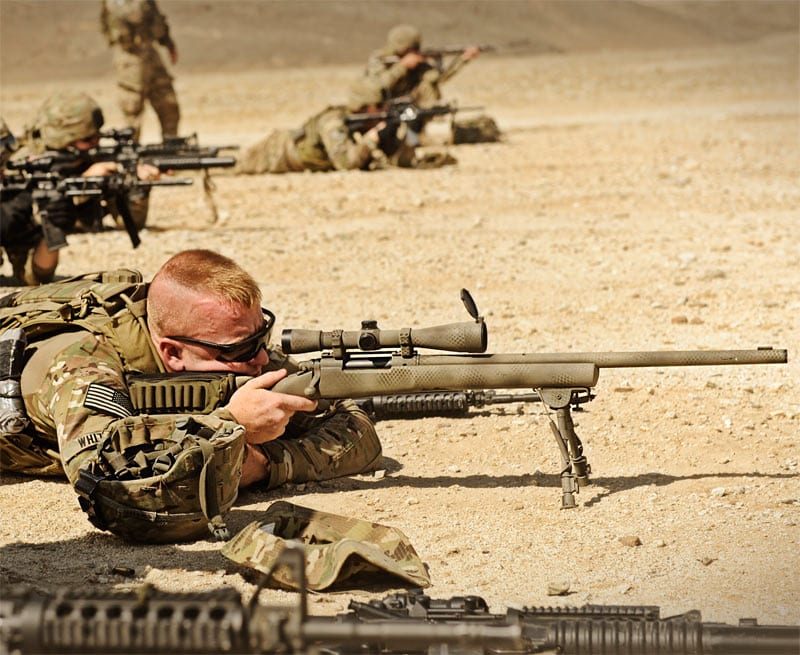
The selection of .300 Winchester Magnum extended the U.S. Army sniper’s range to 1200 meters—four hundred beyond the M24. As a result, the M2010 ESR received an improved, longer-range optic, the Leupold Mark 4 M5A2 with variable 6.5- to twenty-power magnification. The Leupold scope can be fitted with the Knight’s Armament AN/PVS-29 or AN/PVS-30 night-vision scopes for night firing. Finally, a suppressor designed by Advanced Armament Company eliminates flash and significantly reduces the noise signature of the rifle, handy features when a sniper is trying to conceal its position.
The Remington Model 700 is completely unrecognizable as the M2010 Enhanced Sniper Rifle, but the sleek, skeletal sniper weapon owes its existence to the classic hunting rifle found in homes across America. The ability to draw on a hunting weapon and turn it into not one but two sniper rifles is a testament to the Model 700’s excellent design.
Kyle Mizokami is a defense and national-security writer based in San Francisco who has appeared in the Diplomat, Foreign Policy, War is Boring, and The Daily Beast. In 2009 he co-founded the defense and security blog Japan Security Watch. You can follow him on Twitter: @KyleMizokami.


